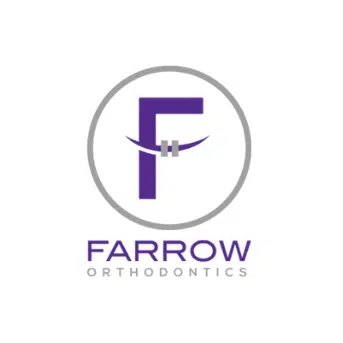Caring for your Invisalign aligners is essential if you want a smooth treatment process. Clean, well-maintained aligners help keep your teeth healthy and prevent staining or odor. Neglecting them can lead to bacteria buildup, discomfort, and even slower progress.
Many people think Invisalign requires little upkeep, but daily cleaning and proper storage make a big difference. A few simple habits will keep your aligners clear and fresh while protecting your oral health. Let’s go over the most effective ways to keep them in top condition.
Daily Cleaning Routine: Keeping Your Aligners Fresh
Caring for your Invisalign and keeping them clean isn’t complicated, but skipping steps can cause issues. Bacteria, plaque, and food particles can build up quickly if they aren’t washed properly. A consistent routine ensures they stay odor-free and invisible.
Morning & Night Care
- Remove aligners before brushing your teeth.
- Use a soft-bristle toothbrush and clear, unscented soap to clean them.
- Rinse thoroughly before putting them back in.
- Avoid toothpaste—it can leave tiny scratches that trap bacteria.
Rinse After Every Meal
- Always rinse aligners before wearing them again.
- Use lukewarm water. Hot water can warp the plastic.
- Never put them back in without cleaning your teeth first.
Using the Right Cleaning Products
Not all cleaning solutions are safe for Invisalign. Some can damage or stain the material. Stick to these options:
✔ Invisalign cleaning crystals
✔ Clear antibacterial soap
✔ Mild dish soap
Avoid:
✖ Toothpaste (too abrasive)
✖ Alcohol-based mouthwash (can weaken aligners)
✖ Colored mouthwash (can stain the plastic)
Following these steps keeps your aligners clear and odor-free. The cleaner they are, the more comfortable they’ll feel throughout the day.
Best Practices for Wearing and Storing Your Aligners
Invisalign aligners are designed for daily wear, but caring for your Invisalign and storing them affects their condition. Proper care prevents warping, loss, and bacterial buildup. Following these simple habits will help keep your treatment on track.
When to Remove Aligners
Invisalign should be worn for 20–22 hours per day, but there are times when they must come out:
- Eating and Drinking – Remove aligners before consuming anything other than water. Food particles and liquids can stain or weaken them.
- Brushing and Flossing – Cleaning teeth before reinserting aligners prevents plaque buildup and bad breath.
- Physical Activities – If playing contact sports, use a mouthguard instead of aligners to avoid damage.
Proper Storage When Not in Use
Misplacing aligners is common, but safe storage prevents damage and loss. Follow these best practices:
✔ Always place aligners in their case when eating.
✔ Keep the case in a designated spot to avoid forgetting them.
✔ Never wrap aligners in napkins—they can easily be thrown away.
✔ Store them away from direct sunlight and heat.
Handling with Care
Rough handling can crack or bend aligners, affecting their fit. To prevent this:
✔ Remove aligners using both hands to avoid unnecessary pressure.
✔ Avoid biting down on them to snap them into place. Use gentle pressure instead.
✔ If rough edges form, use an orthodontic file to smooth them.
Good habits ensure your aligners stay in shape and work effectively. Taking a few extra seconds to store and handle them properly prevents costly replacements and treatment delays.
Avoiding Common Invisalign Care Mistakes
Invisalign aligners are durable, but simple mistakes can lead to staining, warping, or bacteria buildup. In caring for your Invisalign, you need to avoid these common errors to keep them in great condition throughout your treatment.
Using Hot Water for Cleaning
Hot water may seem like a good way to sanitize aligners, but it can warp the plastic. Even slight bending can affect the fit, making them less effective. Always use lukewarm or cool water when rinsing and cleaning.
Skipping Aligner Cleaning
Aligners sit against your teeth for most of the day, so skipping cleaning allows bacteria and plaque to build up. Over time, this can cause:
- Bad breath – Bacteria trapped in aligners can create odors.
- Staining – A cloudy or yellow appearance can develop.
- Gum irritation – Plaque buildup can lead to inflammation and discomfort.
A quick rinse isn’t enough—thorough cleaning is essential.
Drinking Anything Besides Water While Wearing Aligners
Certain drinks can stain or weaken aligners. Avoid drinking:
- Coffee and tea – Can stain aligners and teeth.
- Soda and juice – Sugars and acids can get trapped, increasing the risk of cavities.
- Alcohol – Can dry out the mouth and lead to bacterial growth.
If you drink anything other than water, remove aligners first and brush before putting them back in.
Leaving Aligners Exposed
Placing aligners on a table or counter while eating exposes them to bacteria. They can also be misplaced or accidentally thrown away. Always store them in their case to keep them clean and protected.
Forgetting to Brush After Eating
Food particles left on teeth can get trapped under aligners, leading to plaque buildup and cavities. Before reinserting aligners, always:
✔ Brush and floss to remove food debris.
✔ Rinse your mouth if brushing isn’t possible.
Avoiding these mistakes will keep aligners clear, fresh, and effective throughout treatment.
Deep Cleaning Techniques: Keeping Your Aligners Crystal Clear
Even with daily cleaning, aligners can develop stains and bacteria over time. Deep cleaning once a week helps maintain their clarity and freshness. Using the right methods prevents buildup without damaging the plastic.
Soaking Methods
Soaking aligners removes bacteria and discoloration more effectively than brushing alone. These solutions are safe and effective:
✔ Invisalign Cleaning Crystals – Specifically designed for aligners, these dissolve plaque and bacteria without damaging the material.
✔ White Vinegar and Water Solution – A 1:1 mix of vinegar and water breaks down stains naturally. Soak for 15-20 minutes, then rinse thoroughly.
✔ Hydrogen Peroxide and Water Mix – A 50/50 solution disinfects aligners and helps remove minor stains. Let them soak for about 30 minutes.
How Often to Deep Clean
Deep cleaning should be done at least once a week to maintain aligner clarity. However, if you notice cloudiness or an unpleasant odor, increase the frequency to every few days.
What to Avoid When Deep Cleaning
Some cleaning methods may seem effective but can damage aligners:
✖ Mouthwash with alcohol – Can weaken and discolor aligners.
✖ Toothpaste – Contains abrasive particles that cause scratches.
✖ Bleach or harsh chemicals – Can degrade the plastic and make aligners brittle.
Regular deep cleaning keeps aligners looking clear and feeling fresh while preventing bacteria buildup. It’s a simple step that makes a big difference in overall oral hygiene.
What to Do If Your Aligners Stain or Smell
Even with proper care, Invisalign aligners can develop stains or odors over time. This can happen due to food particles, bacteria buildup, or exposure to staining drinks. Fortunately, there are simple ways to restore their clarity and freshness.
Removing Stains from Aligners
If aligners become discolored, try these safe cleaning methods:
✔ Baking Soda and Water Paste – Mix a small amount of baking soda with water to create a gentle scrubbing paste. Use a soft toothbrush to clean aligners, then rinse thoroughly.
✔ Vinegar Soak – Soaking aligners in a diluted white vinegar solution (1 part vinegar, 1 part water) for 15-20 minutes can help remove mild stains. Rinse well afterward.
✔ Hydrogen Peroxide Rinse – A mixture of hydrogen peroxide and water can break down stubborn discoloration. Let aligners soak for 30 minutes before rinsing.
Eliminating Odor
Unpleasant smells usually come from bacteria trapped in the aligners. To keep them fresh:
✔ Rinse Aligners More Frequently – Rinse with lukewarm water every time they are removed.
✔ Brush Aligners Properly – Use a soft-bristle toothbrush and clear antibacterial soap to clean them daily.
✔ Use an Approved Soaking Solution – Invisalign cleaning crystals or a peroxide-based soak can remove odor-causing bacteria more effectively than brushing alone.
When to Replace Aligners Due to Staining
Some discoloration is preventable, but if aligners become too stained, they may not be as invisible as intended. If deep cleaning doesn’t restore their clarity, contact your orthodontist for guidance. Sticking to a strict cleaning routine prevents long-term staining and keeps aligners looking clear throughout treatment.
Traveling with Invisalign: How to Maintain Hygiene on the Go
Keeping Invisalign aligners clean while traveling can be challenging, but it’s important to stick to a routine. Without proper care, bacteria and plaque can build up quickly. A little preparation makes it easier to manage aligners when away from home.
Must-Have Items for Invisalign Care
Packing a small Invisalign care kit ensures you can clean your aligners wherever you go. Essentials include:
✔ Travel-size toothbrush and toothpaste – Brushing after meals keeps aligners clear and prevents plaque buildup.
✔ Aligner case – Always store aligners in their case when eating or drinking.
✔ Mini bottle of clear antibacterial soap – A gentle cleanser for aligners when brushing isn’t an option.
✔ Disposable cleaning wipes – Useful for quick cleanups when rinsing isn’t possible.
✔ Extra aligner trays (if available) – In case of loss or damage, having a backup set can prevent delays in treatment.
Best Practices When Eating Out
Aligners should always be removed before eating, but when you’re in a public place, handling them properly is key. Follow these steps:
✔ Remove aligners discreetly – Wash hands first and take them out before meals.
✔ Use a napkin or paper towel to wipe them – If a bathroom isn’t available, wipe off saliva before placing them in the case.
✔ Rinse after meals – If brushing isn’t possible, rinse with water before putting aligners back in.
Keeping Aligners Safe While Traveling
Losing aligners on a trip can be frustrating, so take extra precautions:
✔ Always use the aligner case – Never place them on a napkin or in a pocket.
✔ Keep them in a carry-on bag – If flying, avoid putting aligners in checked luggage where they could get lost.
✔ Bring a backup case – Having an extra case prevents misplacing them.
Maintaining clean aligners while traveling takes a little effort, but a few small habits can make a big difference. Sticking to a routine keeps treatment on track, no matter where you are.
Final Tips for Long-Term Success with Invisalign
Sticking to good habits throughout Invisalign treatment ensures the best results. A few simple adjustments to your daily routine will keep your aligners clear, fresh, and effective.
Stick to a Consistent Cleaning Routine
- Clean aligners every morning and night using a soft toothbrush and clear antibacterial soap.
- Rinse with water every time they are removed.
- Soak aligners weekly to prevent buildup and odor.
Replace Aligners on Schedule
- Follow the orthodontist’s instructions for switching to a new set.
- Don’t extend wear time on older aligners—they lose their effectiveness.
- If an aligner gets damaged, contact your orthodontist for a replacement.
Keep a Backup Case
- Store aligners in a case whenever they aren’t in use.
- Keep an extra case in your bag or car to avoid losing them.
- Never wrap aligners in a napkin or place them in a pocket.
Maintain Regular Dental Checkups
- Professional cleanings help prevent plaque buildup that could affect treatment.
- Routine exams ensure teeth stay healthy while wearing aligners.
- Orthodontic checkups confirm that the treatment is progressing as planned.
Committing to these habits helps Invisalign work as efficiently as possible. Proper care ensures a comfortable fit, clear appearance, and the best outcome for your smile.
Stay Consistent in Caring for Your Invisalign
Caring for your Invisalign aligners isn’t complicated, but it requires consistency. Daily cleaning, proper storage, and avoiding common mistakes will keep them clear and odor-free. Deep cleaning, especially when aligners stain or develop an odor, ensures they remain fresh throughout treatment.
Simple habits like rinsing after meals, brushing before reinserting aligners, and using the right cleaning solutions make a significant difference. Whether at home or traveling, sticking to these practices helps maintain hygiene and keeps treatment on track.
By following these guidelines, you’ll keep your aligners in top condition and ensure they do their job effectively. Staying committed to caring for your Invisalign means a smoother experience and the best possible results.
Take the Next Step Toward a Healthier Smile
Caring for your Invisalign aligners is just one part of your orthodontic journey. The right team makes all the difference in achieving the results you want. At Farrow Orthodontics, we provide expert Invisalign treatment with personalized care every step of the way.
Dr. Anthony Farrow and Dr. Peter are committed to making orthodontic treatment accessible and stress-free. From complimentary exams to flexible payment plans, our team is here to guide you through the process with exceptional service and support.
Start your journey with a practice that puts your needs first. Contact Farrow Orthodontics today to schedule your free consultation and take the first step toward a confident, beautiful smile.



